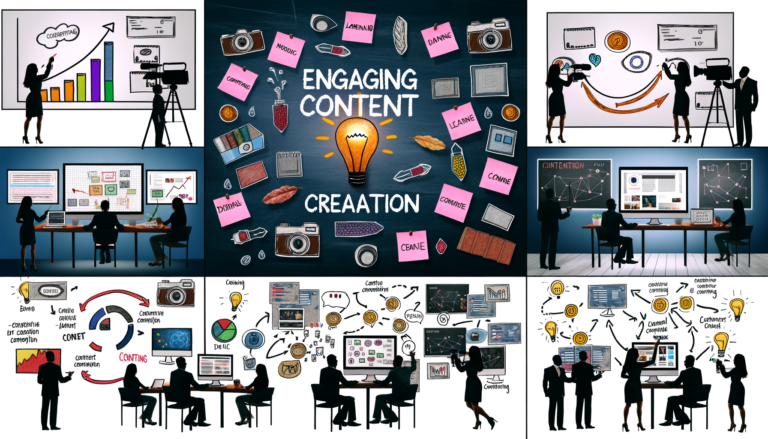Introduction
In the digital age, especially as we proceed through 2024, understanding the return on investment (ROI) from content marketing is not just beneficial; it’s essential for success. With the myriad of strategies and tools evolving rapidly, marketers must stay adept at measuring content ROI to ensure they are not just creating content, but creating content that truly delivers.
Understanding the Basics of ROI in Content Marketing
ROI in content marketing is fundamentally about understanding what you get back from the investments you put into your content creation and distribution efforts. It boils down to not just eyeballs on your website but the right eyeballs, guided towards meaningful interactions that benefit your bottom line. Defining clear objectives and goals is crucial in this process. Whether it’s increasing brand awareness, generating leads, or driving sales, each goal dictates a different approach and set of metrics to focus on when measuring ROI.
Leveraging Tools and Technologies
Using UTM Parameters and Google Analytics 4
One of the staples in tracking online marketing campaigns is using UTM parameters. These snippets of text added to the end of your URLs provide a straightforward way to gauge how various components of your content strategy perform across different channels. Our content marketing services integrate UTM parameters to refine analytics and optimize strategies. Furthermore, Google Analytics 4 (GA4) represents the next evolution in data analysis tools. With its user-centric measurement capabilities, GA4 offers deeper insights into how users interact with your content, providing a richer layer of data to evaluate performance.
Advanced Tracking and Attribution Models
Advanced tracking tools and marketing automation platforms offer a treasure trote of data about how content influences user behavior and conversions. Beyond just tracking views or engagement, these tools help in understanding which content pieces lead to conversions through detailed attribution models. These models can outline the contribution of different content touchpoints in a customer’s journey, proving indispensable in fine-tuning content strategies.
Strategic Experimentation and Data Utilization
Experimenting with CTAs and Content Formats
A/B testing is a critical experiment strategy that allows marketers to pinpoint the most effective elements of their content. By continuously testing variations of call-to-actions (CTAs) or content headlines, marketers can derive data-driven insights that significantly boost conversion rates. Moreover, experimenting with various content formats—from blogs and videos to infographics—can reveal audience preferences and content consumption patterns.
Tracking and Analyzing Key Performance Metrics
The essence of measuring content marketing ROI lies in the ability to track and analyze key performance metrics effectively. This includes detailed analyses of content creation costs, user engagement rates, time on page, and beyond. Additionally, integrating SEO and social media metrics provides a comprehensive view of how content performs organically on search engines and socially across platforms.
Long-Term Value and Continuous Improvement
Calculating Customer Lifetime Value (CLV)
Understanding the Customer Lifetime Value (CLV) associated with content-driven acquisitions offers insights into the long-term value each customer brings. This metric is crucial for assessing how content contributes to sustainable business growth and helps justify budget allocations towards content marketing over other short-term strategies.
Regular Assessment and Adaptation Strategies
Content marketing is dynamic; thus, regular assessment and adaptation are vital. This continuous loop of evaluation and tweaking, based on latest analytics and market trends, helps marketers stay ahead of the curve and ensures that content strategies align with business goals effectively.
Conclusion
As we advance through 2024, the ability to measure and enhance the ROI of content marketing becomes increasingly pivotal. By embracing detailed tracking tools, engaging in strategic experimentation, and focusing on long-term results, marketers can achieve a clear, comprehensive view of their content’s performance. Implement these practices to transform your content marketing into a pivotal tool for growth and success, staying ahead in the competitive landscape of digital marketing.









